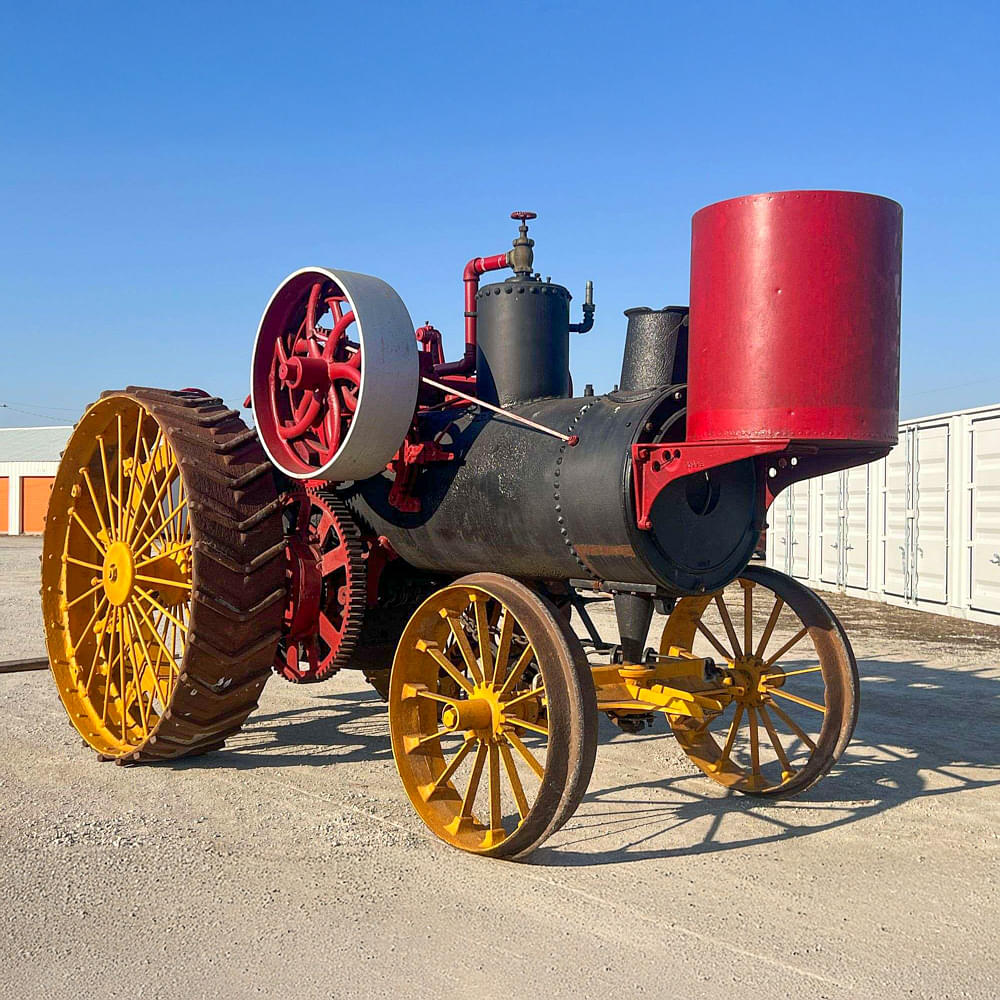INTERESTING IRON
Harrison Jumbo: The steam-powered elephant…
Ryan Roossinck
April 23, 2025
Steam engines like the Harrison Jumbo are patently not my thing. So why write about one? Because on the whole, steam engines are important to the story of ag. Without steam engines, would we have ever had the big gas-powered prairie tractors? Would we have ever gotten to the John Deere D or the Farmall? Who knows?
Plus, when’s the last time you ever heard of a tractor named after an elephant?
The Harrison Jumbo is one of a small handful of steam engines on Aumann Vintage Power’s Pre-30s auction closing on April 29, 2025. The Pre-30s auction is always one of the biggest auctions on their calendar, and this year is looking to be no different. With over 100 lots, 60% of which are tractors, there’s a lot to look at for this sale.
Check out the tractors here.
Now, let’s talk about Harrison!
Harrison Machine Works
Harrison Machine Works was formed in 1848 in Belleville, IL, just southeast of St. Louis. For the first couple of decades, they primarily built threshing machines. However, as the company grew, so was steam power. In 1872, they moved to a larger location and started work on their first steam engine, which was completed in April of 1874. From there, the business started to take off, and in 1898 they released a new design.
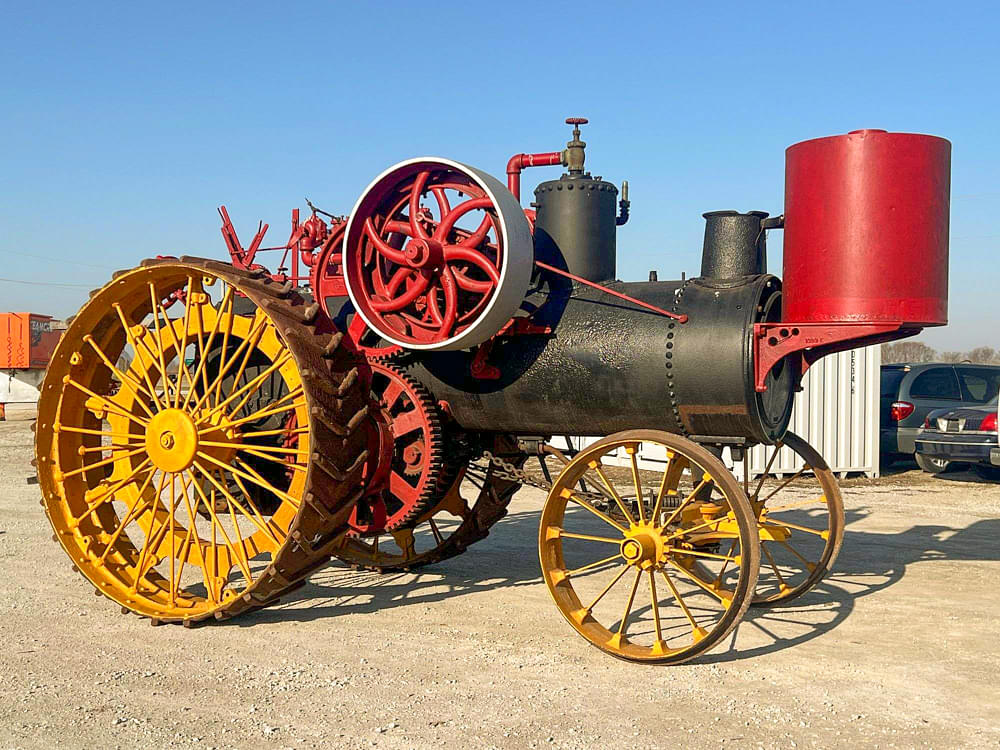
When the new engine was ready for release to the market, Lee Harrison wanted to make a big splash. He wanted a name that would be memorable, one that would stick in people’s heads. At the time, nobody was actually naming their steam engines anything other than a “steam traction engine” or a few numbers noting the horsepower ratings at the drawbar. So, in an effort to be different, he went to pop culture. Specifically…an elephant.
Jumbo the elephant
See, P.T. Barnum–the world’s greatest showman–had purchased a giant African elephant from the London Zoo for use in his circus back in 1882. He named him Jumbo, and as soon as the giant pachyderm was en route to America, he started a massive PR campaign about him. It was very well-received and for several years, Jumbo was one of the main attractions at the circus.
Well, Harrison reached out to him for permission to call his new steam engine the Harrison Jumbo. Barnum agreed, and that was how the steam engine got its name! Today, I doubt any of that could happen. I mean, if I start a tractor company tomorrow and asked Taylor Swift’s lawyers if I can call my tractor line “The Swifty,” I feel like that’s not going to go well for me. Different day and age, I suppose.
Sizes
The Jumbo was available in three different sizes; 15, 17, and 20-horsepower, and incorporated a couple of interesting features to set them apart. For instance, the wheels were a fair bit larger than most others its size. They were 78″ in diameter, 20″ wide, and had 8″ extensions that could be attached. Harrison also ran the smokestack directly through the center of the steam dome. I’ve heard that this design feature makes them run better, but I’m not sure if that’s ever been proven to be true.
Lastly, these machines also had two forward speeds. Granted, they could be termed “slow” and “slower” but still, most steam engines of that era didn’t have that. I believe the “slower” gear was good for about 2.5MPH, and the “slow” gear was good for about 5MPH in the right conditions. I reckon that driving a Jumbo at that speed was probably enough to shake your innerds loose!
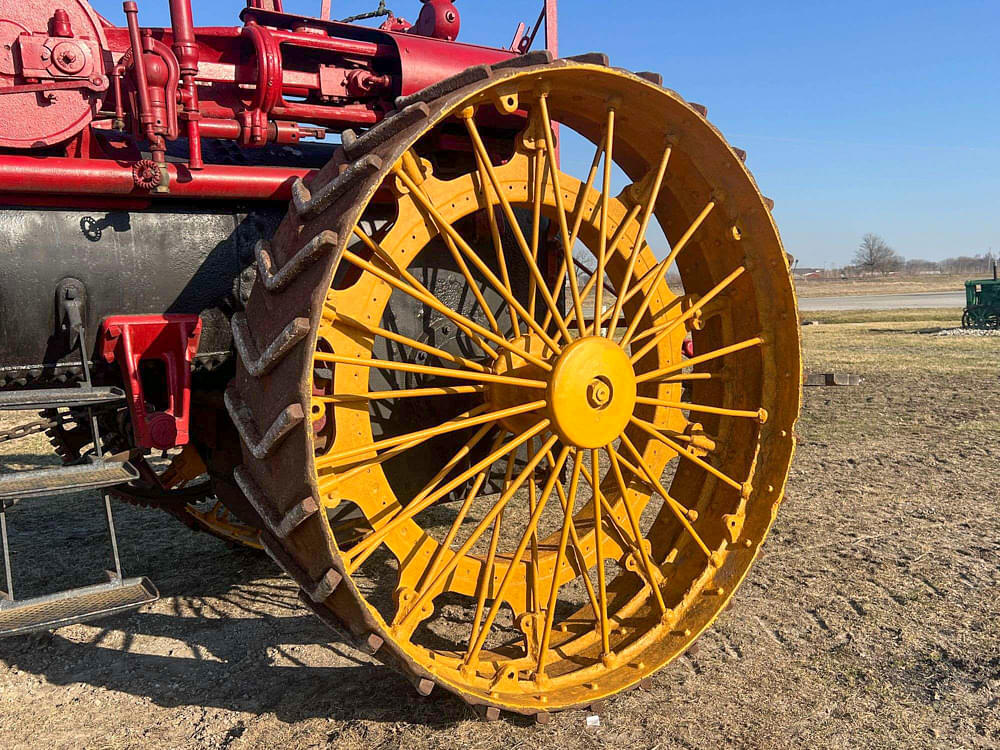
Sales
At any rate, the Jumbos seemed to sell reasonably well for a small manufacturer. Between 1898 and 1937, Harrison Machine Works turned out a total of 842 steam engines. Granted, not a huge number when compared to the nearly-36,000 that J.I. Case built before they transitioned to gas engines in the mid-1920s. Still, for a smaller-scale operation, they did okay. Furthermore, they still built several models of threshing machine as well as hay balers, so their eggs weren’t all in one basket.
Steam: The hill to die on?
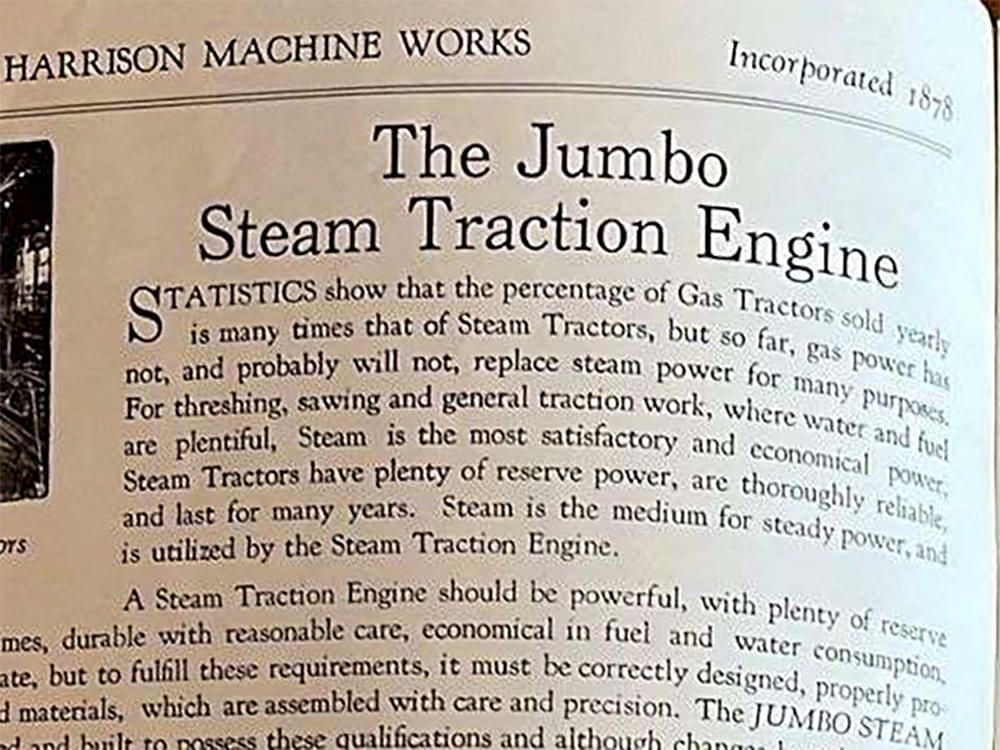
Well, in Harrison’s case, that’s exactly what happened. The industry began moving towards gas and kerosene-burning engines in the late teens or early 20s, and they caught on quickly. Despite there being plenty of fuel and water as they state in the first paragraph of one of their product catalogs, there was a definite drawback to steam engines. They took forever to fire up for a day’s work, and running them is a two (or more) person job. Gas engines could be started much, much faster and farmers could make more efficient use of the day.
Still, Harrison felt that gas engines weren’t the way to go, and ultimately, that slowly led to the death of the company. As steam engine orders dried up, the company downsized until they eventually closed their doors. I believe they built their last engine in 1935, and the last one they sold was in 1937.
From where I’m sitting, Harrison was a company that fell victim to the rapidly-changing times. Still, while they were in business, they did turn out a quality product…which leads us to the one you could buy next week if you wanted to!
The Harrison Jumbo you can buy next week…
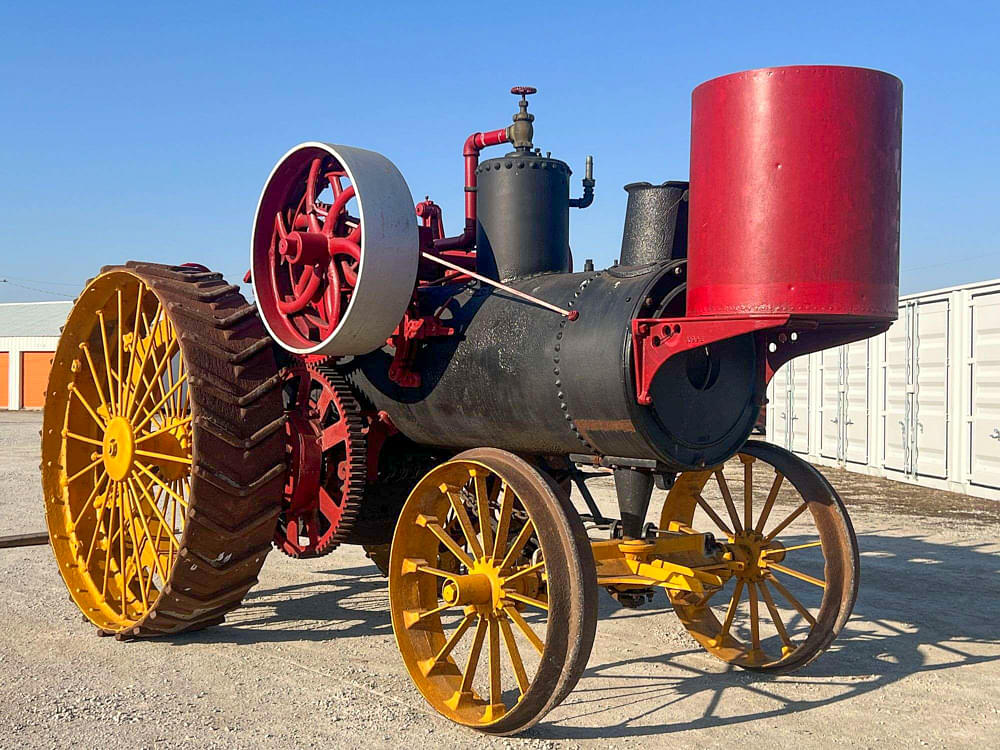
I don’t know a lot about this machine other than what’s in the auction listing, but I’m hoping to find out a little more soon. I can add a little color to what’s been written, too. It’s a fairly nice steam engine in and of itself, but to put it into working order, it’ll take the right buyer.
See, this machine has a couple of issues that need to be rectified. First, it’s missing its centrifugal governor. That’s a fairly important piece, as the governor is one of the means by which the machine keeps from destroying itself. I think this would be fairly easy to address, as the design of most centrifugal governors are reasonably similar. However, the clutch casting is cracked, and from where I’m sitting that’s a little bigger issue. I don’t know if it’s something that can be welded and refinished or if it needs to be recreated from scratch.
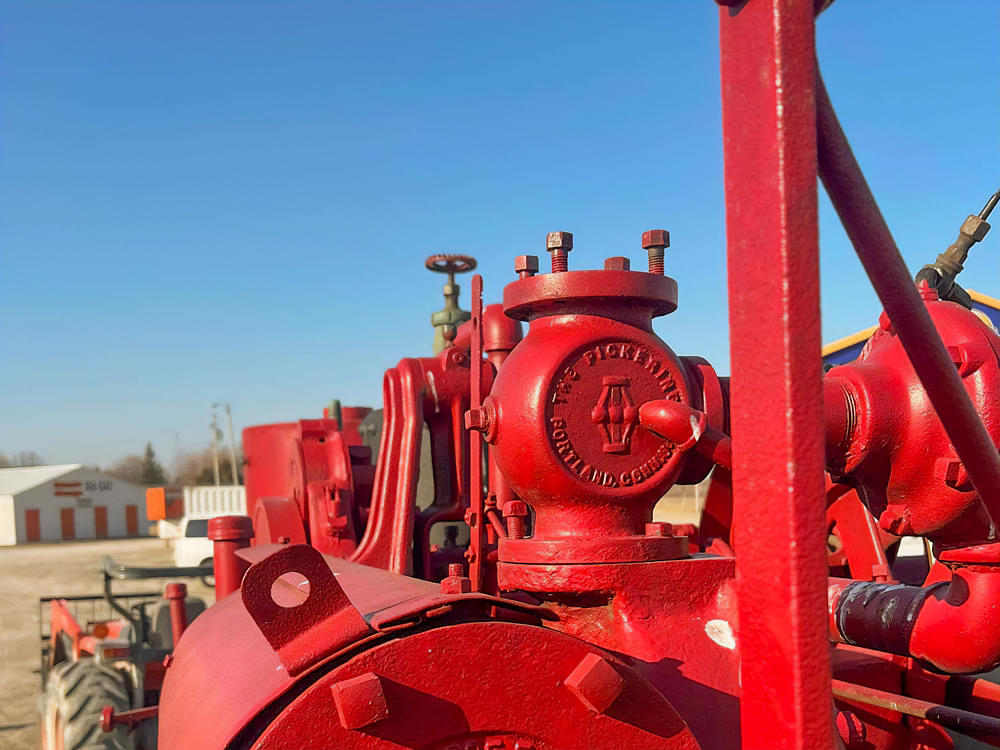
The biggest obstacle with getting the machine into working order, though, will be the boiler. Before it can legally be fired, it’ll have to be pressure-tested and certified. Being that it’s never been done before, it’s quite likely that it’ll need significant work, if not a full restoration. Boiler work isn’t cheap. It’s definitely necessary, though. It’s a safety thing.
Patience is a virtue
Now, these obstacles can be overcome. It’s all possible. However, it’s more than just finding a shop to do the work. It’s finding the experience and mechanical expertise to know how the pieces and parts should be built. That’s the tough part. Generally speaking, the history and mechanics of these machines aren’t well documented. A lot of the knowledge of how steam engines and prairie tractors work has been passed down from generation to generation. As with most restorations, patience will be a virtue.
At the end of the day, though, this Harrison Jumbo has good bones. The potential is definitely there.

Wrapping up
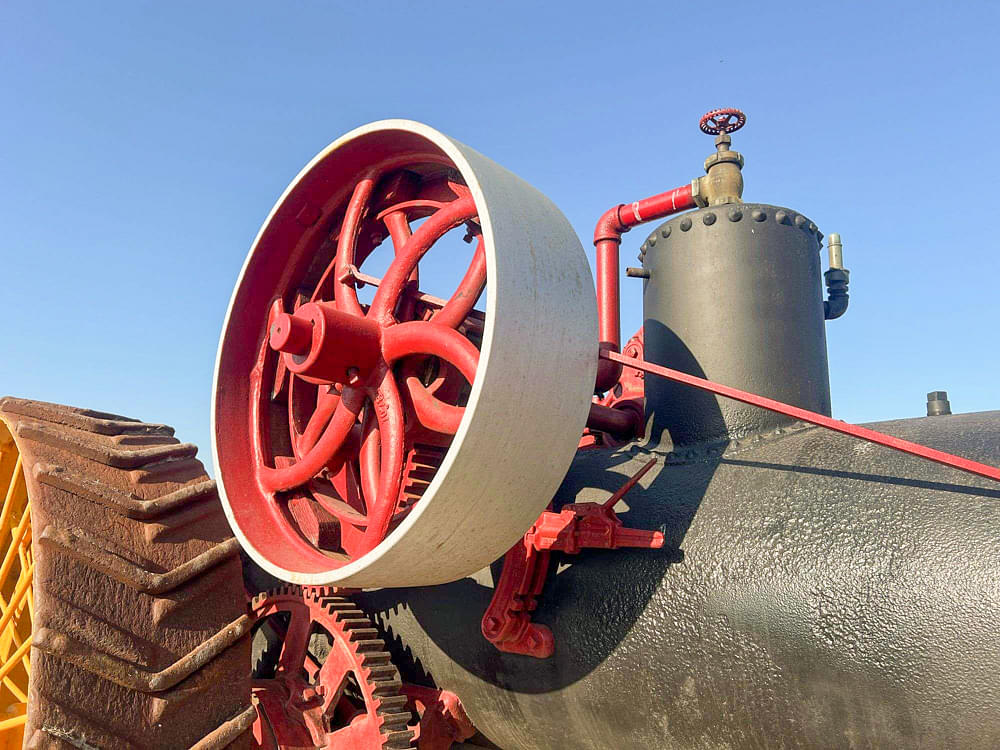
You might be thinking, “Yeah, that’s cool. A tractor named after an elephant. But at the end of the day, does it really matter? It’s an ancient machine that you can’t really do anything with…”
Yes and no. I see your point, and when I went to Aumann’s Pre-30s open house a couple of years ago, I might’ve had some of those same perspectives. By the time I left, though, I’d started to see things a little differently. The fact of the matter is, the machines on these auctions are important pieces of our history. If they’re left in the barn or on the fencerow to rot, the history rots with them.
In 1915, there were 61 tractor companies here in the States. By 1921, that number had tripled. Some of them put out some terrific machines and continued to innovate their products for many years to come. Others barely got off the ground because their products flopped or they fell victim to circumstance. As time went on, though, most all of those companies went away. In many cases, there’s precious few of those machines left. If there’s nobody who preserves what little remains, we’ll forget where we came from. Perhaps it’s a bit of a romantic notion, but I feel like knowing where we came from is still important.
A final thought
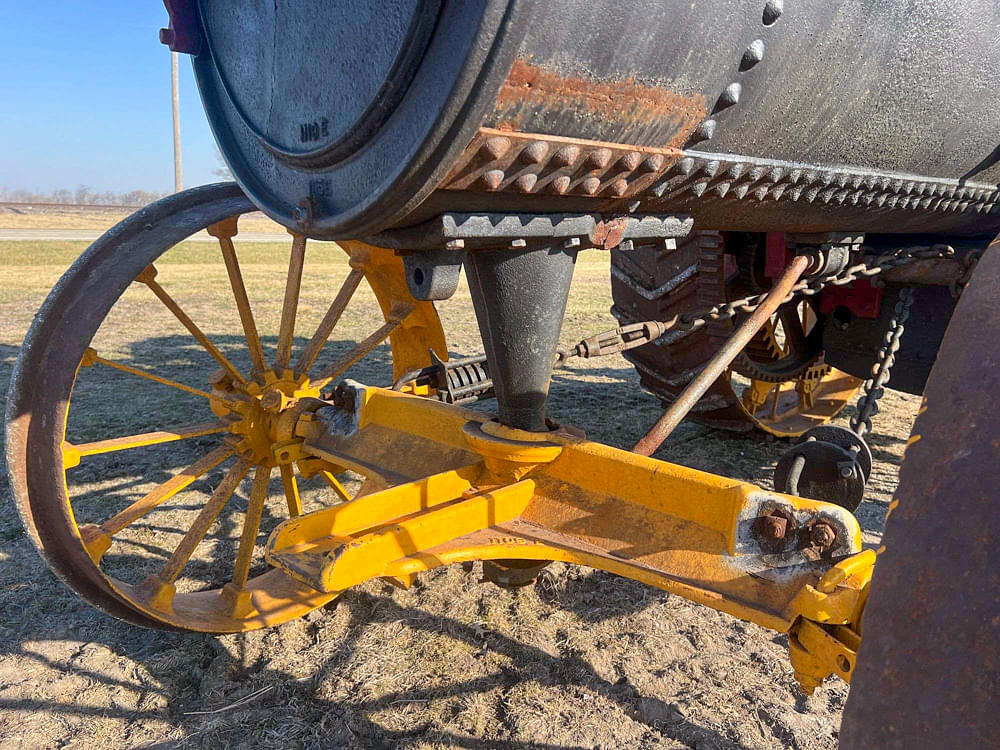
We’ve come a long way in 120 years. Back then, firing up a Harrison Jumbo took a crew of people and hours of prep just to get through a single workday. Today? We barely have to touch the steering wheel. In fact, we’re not far off from the machines running themselves—John Deere just demo’d the autonomous capabilities of the 9RX at a Reisterer & Schell field day last week!
Modern farming tech is letting us do more with less physical effort, and with accuracy that would’ve seemed impossible back then. And whether you’re skeptical or sold on it, one thing’s clear: doing more work with less effort with pinpoint accuracy is progress.
But let’s not forget where we came from. FFA and 4H kids—and honestly, the rest of us too—need to see this old iron in action. Understanding just how hard the work used to be gives us a real appreciation for what we have now. You don’t have to live in the past to get it, but trying to steer a 15,000-pound steam engine with chain-driven steering at 2MPH will make you grateful for power steering in a hurry.
So, if nothing else, do it for the appreciation. Take a look at Aumann’s Pre-30s catalog—I’ll drop the link below. And if you’re in central Illinois with time to spare (especially if it’s too wet to plant), check out their Open House this Friday and Saturday. The tractors will be running, and it’s worth the trip—I went a couple years back and had a blast.
Aumann Vintage Power’s Pre-30s tractors listed on Tractor Zoom

